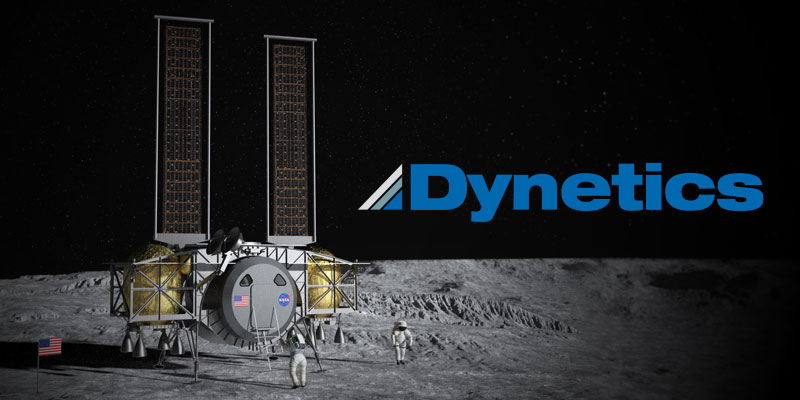Huntsville-based Dynetics on Thursday announced it has successfully completed the Preliminary Design Review (PDR) of the Dynetics Human Landing System (HLS) for NASA’s Artemis Program, marking another major milestone in human spaceflight and Alabama’s continuing, indispensable contribution to space exploration.
The Rocket City company, which is a wholly-owned subsidiary of Leidos, was named last year as one of three prime contractors awarded a contract to design a HLS and compete to build the system that ultimately is used in Artemis — the program which aims to return Americans to the surface of the moon by 2024 and eventually take the first humans to Mars. Blue Origin and SpaceX were the other two prime contractors awarded contracts, with Blue Origin’s work also being centered in Huntsville.
Since that award 10 months ago, the Dynetics team has now submitted its HLS proposal and successfully completed four reviews: a systems requirements review, a certification baseline review, the continuation review and, as of this week, the preliminary design review.
According to a company release, this latest review provided NASA with insight into the design of the human lander that Dynetics hopes will carry the first woman and the next man to the moon.
“This review, a culmination of nine months of intense design and analysis, included a robust portfolio of development and risk reduction testing,” stated Robert Wright, Dynetics HLS program manager. “The PDR demonstrated that our team’s preliminary lander design meets all the system requirements with acceptable risk while remaining within current cost and schedule constraints.”
Additionally, the team reportedly presented detailed technical descriptions of design trades, analyses conducted and a design status to NASA. Verification methods were also explained.
“This is another step toward the lunar surface,” said Kim Doering, vice president of Space Systems at Dynetics. “The PDR confirmed that our team is ready to proceed with a detailed design as we approach the next milestone, Critical Design Review. This is yet another notable review that brings us one step closer to landing the next Americans on the moon.”
Dynetics is not the only Alabama connection to their HLS proposal. As prime contractor, Dynetics leads a global team of industry-recognized experts with human spaceflight and hardware/software experience directly applicable to the HLS. All members have made significant contributions to the team’s progress to date, a past release noted.
Decatur rocket builder United Launch Alliance (ULA) is one of these partners and subcontractors, as is Tuskegee University. This continues the theme of Artemis being driven by Alabama.
The Dynetics HLS can be fully integrated and launched on the Space Launch System (SLS) Block 1B vehicle, which is the world’s most powerful rocket ever that will be the centerpiece of Artemis. Boeing is the lead contractor for the SLS core stage, with the company’s Huntsville-based Space and Launch division managing that SLS work.
For commercial launches, the Dynetics HLS can be flown aboard ULA’s Vulcan Centaur rocket, which is built in Decatur.
Very exciting! Proud to be on your team with Vulcan and it’s advanced Centaur V https://t.co/09qT2YAEP0
— Tory Bruno (@torybruno) February 25, 2021
NASA’s HLS program is managed out of Marshall Space Flight Center.
Sean Ross is the editor of Yellowhammer News. You can follow him on Twitter @sean_yhn












